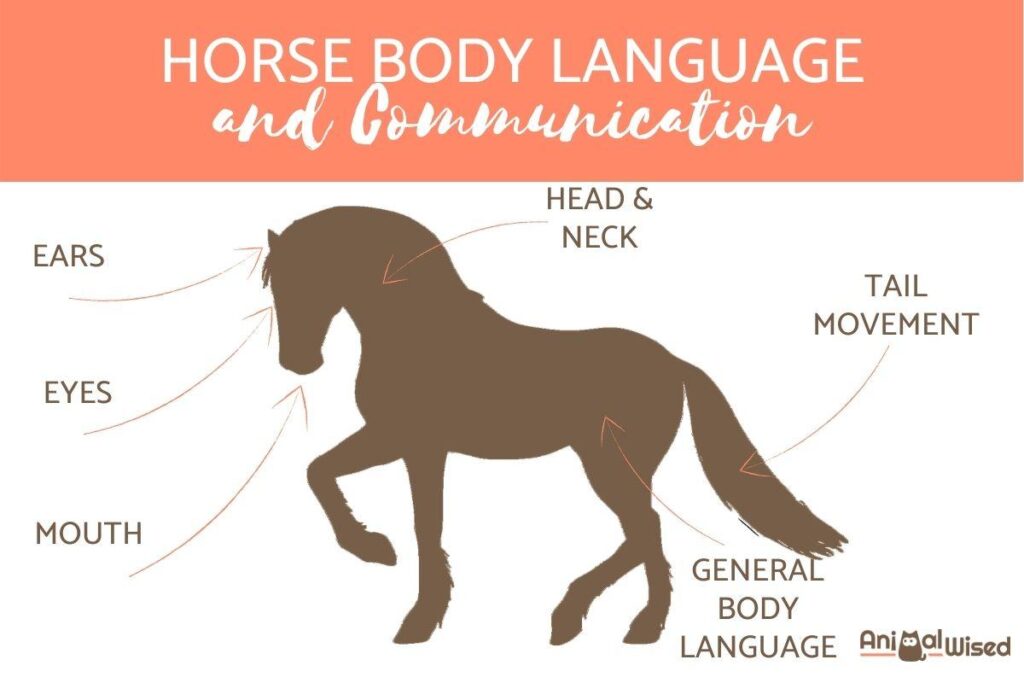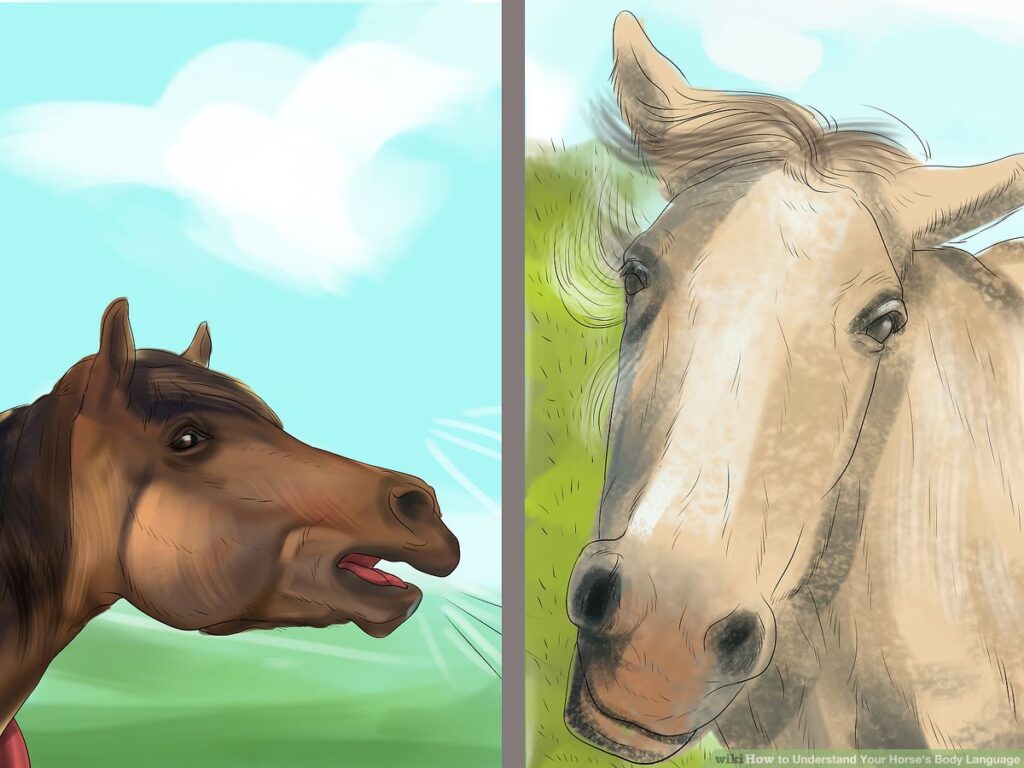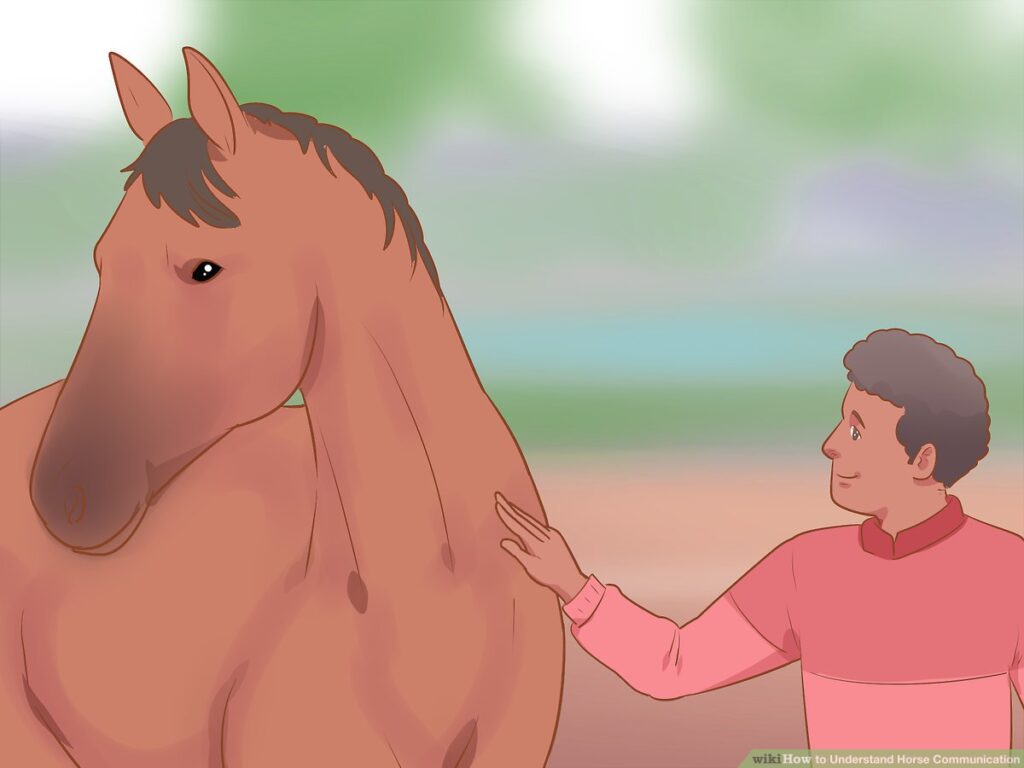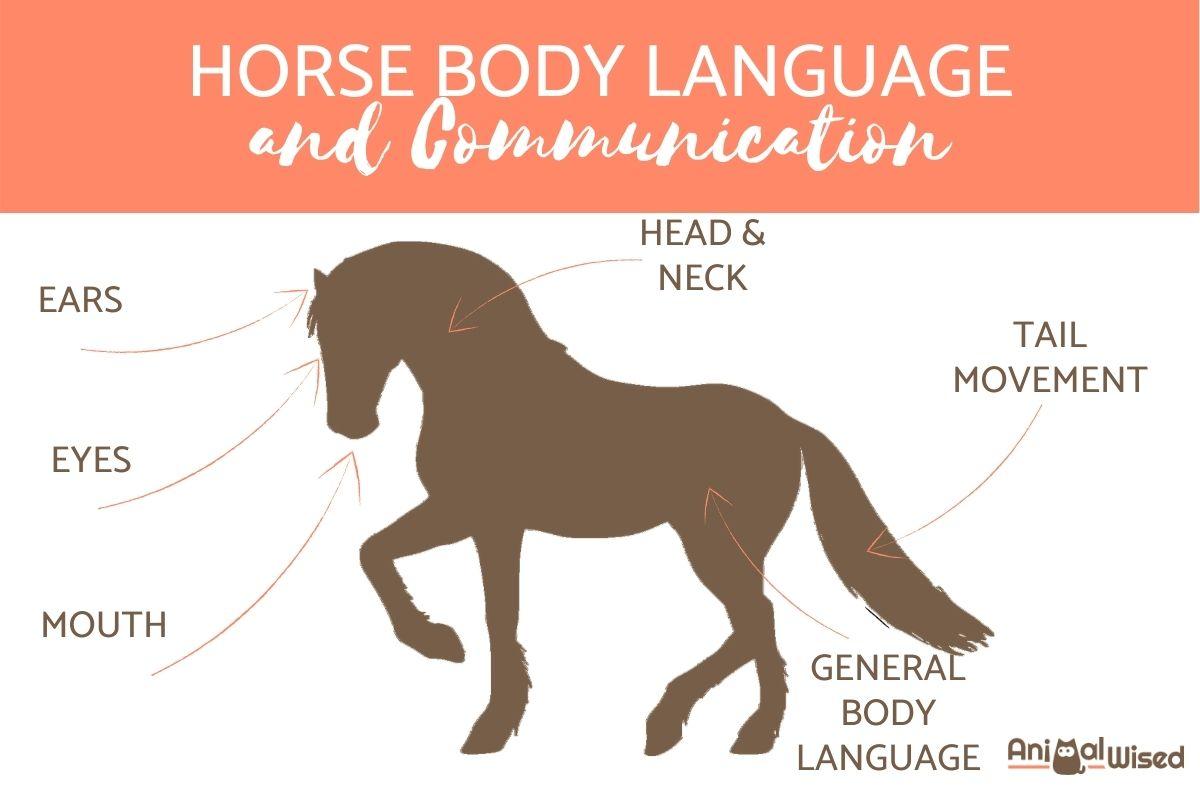In “The Art of Communication: Understanding Your Horse’s Language,” you will gain valuable insights into the hidden language of horses. This article explores the intricate ways that horses communicate with each other and how we can better understand and interpret their signals. Through a series of observational studies and expert interviews, you will discover the meaning behind their body language, vocalizations, and other nonverbal cues. By improving your knowledge of equine communication, you will deepen your bond with your horse and develop a more harmonious partnership. So, saddle up and get ready to dive into the fascinating world of horse communication.
Understanding Horse Communication
Horses are incredibly social animals that communicate with each other and with humans in various ways. Understanding their language is crucial for building a strong bond and partnership with these magnificent creatures. Horse communication can be categorized into three main aspects: body language, vocalizations, and gestures.
Body Language
Horses use their bodies to express their emotions, intentions, and establish dominance within a herd. As an owner or rider, it’s essential to pay close attention to their body language to better understand what they are trying to communicate. Some common body language cues include:
-
Ears: Horses’ ears can indicate their mood. Forward-facing ears suggest attentiveness or curiosity, while backward or pinned ears indicate anger or aggression.
-
Tail: The position and movement of the tail can convey a horse’s emotions. A relaxed, low-hanging tail signifies contentment, while a tightly held or swishing tail may indicate irritation or discomfort.
-
Posture: Horses’ overall body posture can provide valuable insights into their feelings. A confident horse will hold its head high, while a submissive or scared horse might lower its head or cower.
Vocalizations
Horses have a range of vocalizations that they use to communicate with each other and with humans. While they may not rely heavily on vocalizations, these sounds can convey specific messages.
-
Neighs: Neighing is a loud vocalization that horses use to greet, signal distress, or communicate with their herd. It can vary in tone and intensity depending on the situation.
-
Whinnies: Similar to neighs, whinnies are high-pitched vocalizations horses use to communicate with other horses or humans. It can express excitement, longing, or as a means of seeking attention.
Gestures
In addition to body language and vocalizations, horses also use various gestures to communicate. These gestures can involve specific movements or actions that can convey distinct messages. Some common gestures include:
-
Nudging: Horses may nudge each other or humans to seek attention, express affection, or show submission.
-
Pawing: Pawing the ground can indicate impatience, frustration, or discomfort. It may also be a sign of anticipation or eagerness.
-
Biting or Nipping: While seemingly aggressive, biting or nipping can be a means for horses to establish dominance within a herd or signal their displeasure. It’s crucial to discourage this behavior and redirect it into more positive forms of communication.
Building Trust and Bonding
Developing a strong bond and trust with your horse is the foundation for effective communication. It requires understanding their needs and desires, establishing clear boundaries, and creating a positive environment for them to thrive.
Understanding Needs and Desires
To effectively communicate with your horse, it is crucial to understand their needs and desires. Horses have basic needs such as food, water, shelter, and companionship. By meeting these needs, you establish trust and create a strong foundation for a healthy relationship. Additionally, horses have individual desires and preferences. Some may enjoy certain activities, while others may dislike them. Understanding and accommodating these desires can enhance your communication with them.
Establishing Clear Boundaries
Setting clear boundaries is essential in any relationship, including the one you have with your horse. Horses are responsive to clear and consistent signals, and by establishing boundaries, you create a framework for effective communication. Consistency is key, as horses thrive when they understand what is expected of them. Whether it’s teaching them to respect your personal space or establishing limits during training, clear boundaries ensure a harmonious and respectful partnership.
Creating a Positive Environment
Horses are incredibly perceptive and sensitive to their surroundings. Creating a positive environment that minimizes stress and promotes emotional well-being is crucial for effective communication. Providing them with a safe and comfortable living space, a balanced diet, and regular exercise contributes to their overall happiness and willingness to communicate. Additionally, positive reinforcement encourages desired behaviors and strengthens the bond between you and your horse.

Equine Communication with Humans
Horses have an incredible ability to understand and respond to human cues. By bridging the gap in communication, you can teach and learn from your horse, building a strong partnership based on trust and mutual understanding.
Responding to Human Cues
Horses are highly observant and can interpret human body language, tone of voice, and even subtle changes in facial expressions. They can gauge your emotions and respond accordingly. By becoming aware of your own cues and learning to communicate effectively through your body language, voice, and even breathing, you can establish a clear line of communication with your horse. This allows you to convey your intentions and cues more efficiently.
Teaching and Learning
Communication is a two-way street, and horses are excellent teachers if we are open to learning from them. When training or working with your horse, it’s important to maintain an open mind and be receptive to their feedback. Pay attention to their responses to your cues, both positive and negative, and adjust your approach accordingly. Building a strong partnership involves constant learning and adapting to each other’s needs and abilities.
Building a Strong Partnership
A strong partnership with your horse is built on trust, respect, and effective communication. By investing time and effort into understanding their language and needs, you can foster a deep connection that allows you to work together harmoniously. Building trust takes patience and consistency, but the rewards are immeasurable.
Emotional Communication
Horses experience a wide range of emotions, and being able to recognize and respond to these emotions is vital for maintaining a strong bond. Understanding how horses express fear, anxiety, happiness, contentment, frustration, and aggression helps you navigate their emotional landscape and create a supportive environment.
Recognizing Fear and Anxiety
Fear and anxiety are common emotions in horses, and they can manifest in various ways. Some signs of fear or anxiety include tense body posture, increased heart rate, restlessness, sweating, and avoidance behaviors. By recognizing these signs, you can take steps to alleviate their fears and provide reassurance.
Expressing Happiness and Contentment
When a horse is feeling happy and content, they display relaxed body language, soft eyes, and may even engage in playful behaviors. It’s important to recognize and reward these positive emotions to reinforce their well-being and strengthen your bond.
Dealing with Frustration and Aggression
Like humans, horses can experience frustration and aggression. These emotions may arise from a variety of sources, including pain, discomfort, or inadequate training. It’s important to address the underlying causes of these emotions and work with a professional trainer if necessary. Building a language of trust and understanding can help manage and redirect these negative emotions in a positive way.

Listening to Your Horse
To effectively communicate with your horse, it’s crucial to listen and be attentive to their signals. Horses communicate through their body language, vocalizations, and even facial expressions. By observing and interpreting these cues, you can better understand their needs and desires.
Observing Body Language
Horses communicate a wealth of information through their body language. Pay attention to their ears, eyes, tail, and overall posture to assess their mood and emotional state. Subtle changes in their body language can indicate discomfort, excitement, fear, or relaxation.
Interpreting Vocalizations
While vocalizations may not be the primary means of horse communication, they can still provide valuable insights. Become familiar with the different sounds horses make and the context in which they are used. Neighs, whinnies, snorts, and nickers can convey various emotions or requests.
Paying Attention to Expressions
Horses have expressive faces that can provide clues about their emotional state. Observe their eyes, nostrils, and overall facial tension to gauge their reactions. Soft eyes and relaxed facial muscles indicate relaxation, while wide eyes and clenched jaws might suggest fear or tension.
Non-Verbal Communication
Horses excel at non-verbal communication, and as their human partners, we can utilize non-verbal cues to effectively communicate with them. By consciously using body position, movement, pressure, and release, you can send clear messages to your horse without verbal commands.
Using Body Position and Movement
Your body position and movement can convey specific commands or requests to your horse. Leaning forward can encourage movement, while standing tall and still can indicate stillness or stopping. Subtle shifts in your weight or posture can help direct your horse’s attention and movement.
Applying Pressure and Release
Horses respond well to pressure and release techniques. By applying gentle pressure with your body or the reins and releasing it as soon as your horse responds appropriately, you can reinforce desired behavior. This reinforces the line of communication and allows your horse to understand your cues better.
Establishing Dominance and Submission
Establishing a clear hierarchy is essential in horse-human communication. Horses are naturally hierarchical animals and look for leadership from their human counterparts. By establishing yourself as a calm and confident leader, your horse will feel secure and comfortable in their role as a follower.

Creating a Language of Trust
Trust is the cornerstone of effective communication with horses. By creating a language based on consistency, reward, and understanding individuality, you can build a strong bond and develop a deep connection with your horse.
Developing Consistency
Horses thrive on consistent and predictable communication. Establishing a routine and using consistent cues and signals help them understand what is expected of them. By being consistent in your actions, you build trust and reinforce their understanding of your requests.
Rewarding Good Behavior
Positive reinforcement is a powerful tool in creating a language of trust. Rewarding your horse for desired behavior, whether through praise, treats, or physical touch, helps reinforce their understanding of your cues and builds their trust in you.
Understanding Individuality
Every horse is unique, and understanding their individual personality, strengths, and limitations is essential. Take the time to observe and learn about your horse’s preferences, fears, and abilities. By tailoring your communication approach to suit their individual needs, you create an environment that fosters trust and understanding.
The Power of Patience
Patience is a virtue when it comes to effective communication with horses. Taking the time to listen, understand, and respond to your horse’s needs helps build a solid foundation for a harmonious partnership.
Taking Time to Communicate
Communication with horses requires patience and time. Rushing or forcing your horse into compliance will only lead to frustration and misunderstandings. By taking the time to establish trust, learn their language, and respond to their cues appropriately, you lay the groundwork for a successful partnership.
Understanding Training Progression
Training a horse is a step-by-step process, and progress may vary for each individual. It’s important to set realistic expectations and understand that learning takes time. Break down complex tasks into manageable steps, rewarding your horse’s progress along the way. This gradual progression ensures a positive learning experience and strengthens your communication.
Avoiding Frustration
Frustration can hinder effective communication with your horse. It’s essential to remain calm and composed, even when faced with challenges or setbacks. If you feel overwhelmed, take a step back, and reassess the situation. Remember that horses are highly perceptive animals and can sense your emotions. Approaching communication with patience and a positive mindset allows for a more productive and rewarding experience.

Common Misunderstandings
Miscommunication can occur even between the most experienced horse owners and their equine partners. By recognizing common misunderstandings, you can work to avoid them and improve your communication with your horse.
Confusing Signals
Horses are incredibly perceptive but can sometimes misinterpret signals given by humans. It’s important to be clear and consistent in your cues to avoid confusion. Avoid conflicting commands or mixed signals, as it can lead to frustration and misunderstandings.
Misinterpreting Fear or Defiance
Fear and defiance can have similar outward expressions in horses, but they stem from different internal states. It’s crucial to distinguish between fear-based behavior and willful defiance. Misinterpreting these emotions can lead to inappropriate responses or misguided training methods. Seek professional guidance if you are unsure how to handle your horse’s behavior.
Overemphasizing Obedience
While obedience is important, solely focusing on obedience can hinder a true partnership. Building a language of trust and understanding involves creating an environment where your horse feels safe expressing their emotions and needs. Balancing obedience with communication that encourages their active participation fosters a harmonious and fulfilling relationship.
Further Enhancing Communication
There are various methods and techniques that can further enhance your communication with your horse. By utilizing positive reinforcement, natural horsemanship techniques, and focusing on building a deep connection, you can take your communication to the next level.
Using Positive Reinforcement
Positive reinforcement is a valuable tool in horse training and communication. By rewarding desired behavior, you motivate your horse to repeat those actions. Treats, praise, or a gentle pat can serve as effective positive reinforcements. However, it’s important to find a balance and avoid over-reliance on treats, as it may lead to a lack of response without a reward present.
Utilizing Natural Horsemanship Techniques
Natural horsemanship techniques emphasize understanding and communicating with horses in a way that aligns with their natural instincts and behaviors. These techniques, such as round pen training, liberty work, and groundwork, can help establish trust, respect, and clear communication. Natural horsemanship approaches encourage partnership and collaboration rather than dominance.
Building a Deep Connection
Developing a deep connection with your horse goes beyond training and communication techniques. It involves spending quality time together, engaging in activities that your horse enjoys, and being attuned to their emotional and physical needs. By building a strong bond and connection, you create a partnership that is based on trust, respect, and effective communication.
In conclusion, understanding and effectively communicating with horses is a lifelong journey. By paying attention to their body language, vocalizations, and gestures, you can decode their messages and respond appropriately. Building trust and bonding involves understanding their needs and desires, establishing clear boundaries, and creating a positive environment. Equine communication with humans relies on responding to cues, teaching and learning, and building a strong partnership. Emotional communication requires recognizing fear and anxiety, expressing happiness and contentment, and effectively dealing with frustration and aggression. Listening to your horse involves observing body language, interpreting vocalizations, and paying attention to expressions. Non-verbal communication can be enhanced through body position and movement, applying pressure and release, and establishing dominance and submission. Creating a language of trust involves developing consistency, rewarding good behavior, and understanding individuality. The power of patience is vital in taking time to communicate, understanding training progression, and avoiding frustration. Avoiding common misunderstandings such as confusing signals, misinterpreting fear or defiance, and overemphasizing obedience is crucial. Further enhancing communication can be achieved through positive reinforcement, utilizing natural horsemanship techniques, and building a deep connection. By becoming fluent in the language of horses, you can forge a deep, meaningful partnership with these incredible creatures.

